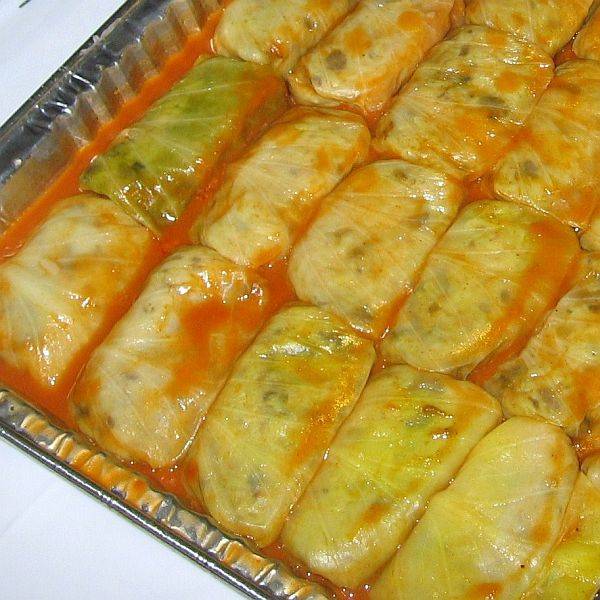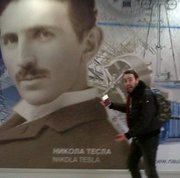 Not eat a vegan, they don't do that anymore, that died with Milosevic. In a land where oil, fat and meat are king, it's hard enough trying to get by as a vegetarian, but explaining veganism to Serb friends, provided you get the central points across without you all dying of old age, results in either disbelief or pity. Lonely Planet's Guide to Eastern Europe recommends a couple of vegan-friendly salads, strengthening the conceit that you're up meat creek without a tofu paddle.
Not eat a vegan, they don't do that anymore, that died with Milosevic. In a land where oil, fat and meat are king, it's hard enough trying to get by as a vegetarian, but explaining veganism to Serb friends, provided you get the central points across without you all dying of old age, results in either disbelief or pity. Lonely Planet's Guide to Eastern Europe recommends a couple of vegan-friendly salads, strengthening the conceit that you're up meat creek without a tofu paddle.
That's totally not true. As is usually the case with these things, people don't often draw the lines between what you're trying to do and what people are already doing. During Serbian Orthodox advent, both meat and dairy are strictly prohibited (well, 'strictly'), and as you'd expect from a people who love to eat, they don't exactly go to the sleep for this period – they carry on eating. One such dish is Posna Sarma, stuffed cabbages, which if you have a knack for rolling fajitas, will be right up your street.
Vague ingredients (I'm not a chef)
A couple of fingers of vegetable oil
Two finely chopped onions
Two finely chopped sweet peppers
Three finely chopped cloves of garlic
One big ass jar of Sauerkraut
One finely chopped stick of celery
Two small carrots, peeled and finely chopped
Two cups of long grain rice
Two tins of chopped tomatoes
A finger of paprika, salt and black pepper
A big cabbage, as big as you can manage
Three cold bottles of Jelen Pivo, or other suitable thirst quenching beer
Preparation
1. Splash the vegetable oil into a big pan. Don't be alarmed if it looks like too much.
2. Add the onions, and sauté until they go translucent.
3. Add the carrots, celery and peppers, and cook for five minutes.
4. Crack open the first beer and wipe your brow.
5. Turn on the oven to 350/215 degrees and forget about it. Obviously don't forget about it, but leave it for a minute.
6. Add the rice, tinned tomatoes (save about half a tin), salt, pepper and paprika, and simmer for five minutes.
7. Set aside to cool and mix in the garlic.
8. Gently pull apart the leaves (setting aside the tough ones, if you have them) of the cabbage until you get a little brain-sized ball that's too tightly packed to unpick.
9. Steam the cabbage until its floppy and pliable, brain first so you can pull away those little guys too.
10. Remove the tough stem from the steamed cabbage leaves and chop up any cabbage remnants.
11. Drain the jar of Sauerkraut, do it a few times if your stomach isn't hardened to it.
12. Spread the chopped cabbage and the Sauerkraut onto a large baking dish.
13. Line up the cabbage leaves and spoon two scoops of your filling into them, roll them up into little mini-fajitas, using the smaller leaves to patch up breakages.
14. Pack them nice and tightly on the bed of Sauerkraut.
16. Drench the neatly packed row of cabbage rolls in the remaining tin of tomatoes, add a bit of cold water/passata until the liquid is level with the rolls.
17. Lay the tough outer leaves (doesn't matter if you don't have them, it's just good not the waste the flavour) and some tinfoil, over your rolls.
18. Stick them in the oven for an hour. Wash out your beer bottle, stick it in the recycling and crack open another.
19. Settle down in front of a badly subtitled version of darkly comedic war epic St. George Shoots the Dragon – keep an eye on the clock.
20. An hour has passed and you've just about worked out what's happening, not helped by the slightly out of synch subtitles. Pause the film and get the cabbage rolls out.
21. Crack open another beer, and eat in front of the TV, feel free to stick anything you don't eat in the fridge.
 Beautiful Adriatic coastline, ancient monasteries, strong coffee and dramatic landscapes, within easy reach of Dubrovnik and Belgrade, Montenegro may be one of the smaller gems in the Balkans' diadem but it's starting to glitter more brightly than ever. One of the drawbacks was the the range of accommodation available to the budget traveller, small hotels and guest houses (or pensione), often lack a web presence and when they do you're often at the mercy of Google Translate, and awkward, often frustrating, pidgin emails bouncing back and forth as you try and plan your adventure in an online equivalent of Chinese Whispers.
Beautiful Adriatic coastline, ancient monasteries, strong coffee and dramatic landscapes, within easy reach of Dubrovnik and Belgrade, Montenegro may be one of the smaller gems in the Balkans' diadem but it's starting to glitter more brightly than ever. One of the drawbacks was the the range of accommodation available to the budget traveller, small hotels and guest houses (or pensione), often lack a web presence and when they do you're often at the mercy of Google Translate, and awkward, often frustrating, pidgin emails bouncing back and forth as you try and plan your adventure in an online equivalent of Chinese Whispers.










 For the penniless flyer, the map of Europe might as well have a big swirling space void where Serbia is – direct flights from the UK are few, and most indirect flights involve either
For the penniless flyer, the map of Europe might as well have a big swirling space void where Serbia is – direct flights from the UK are few, and most indirect flights involve either